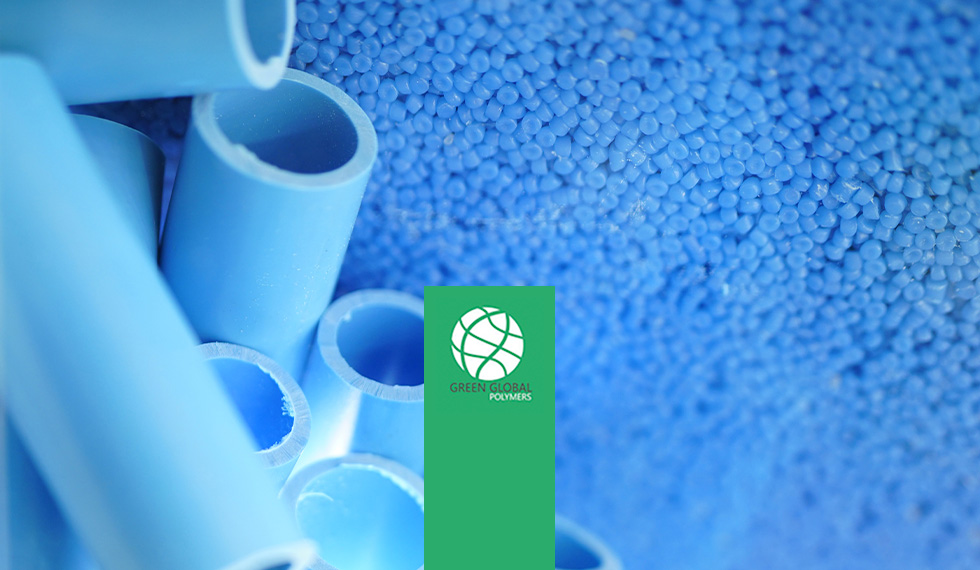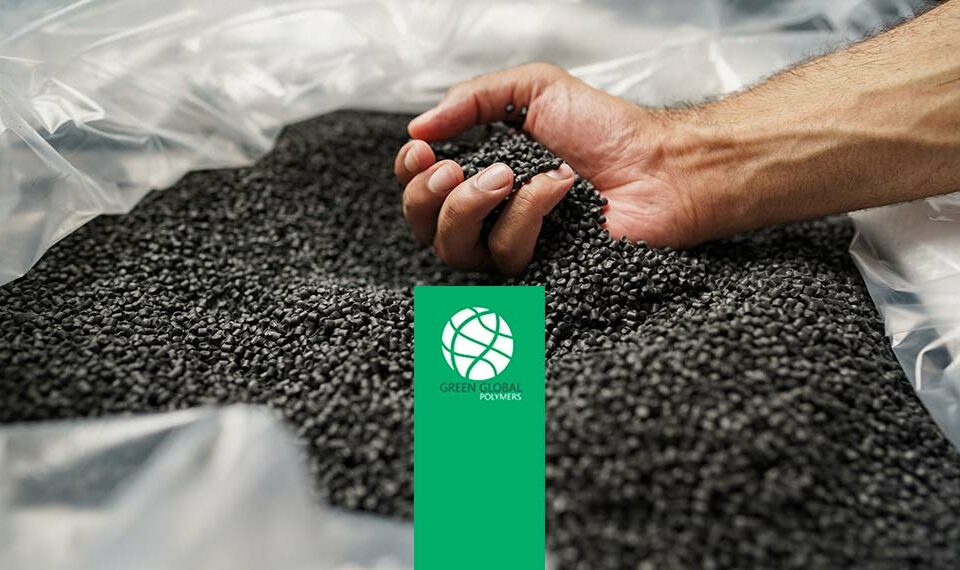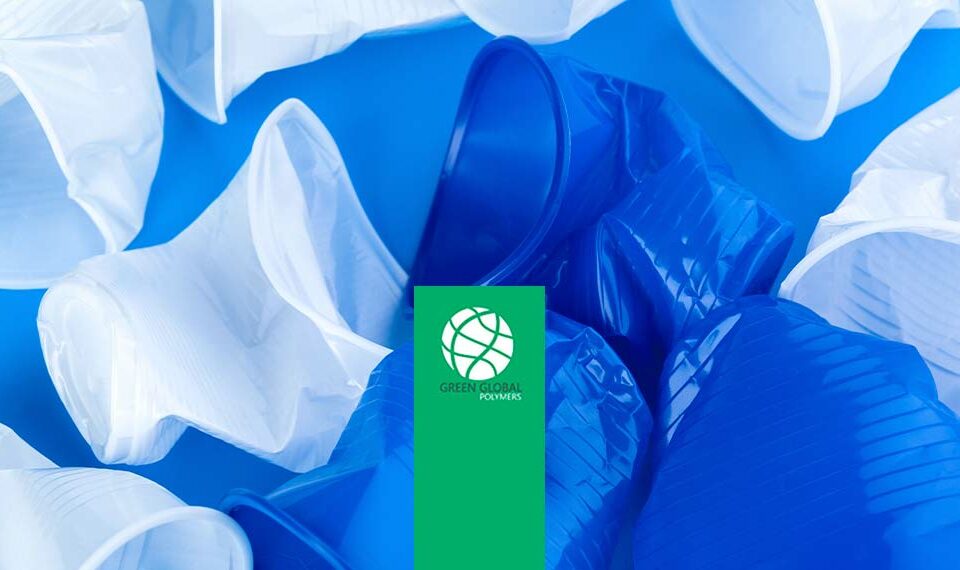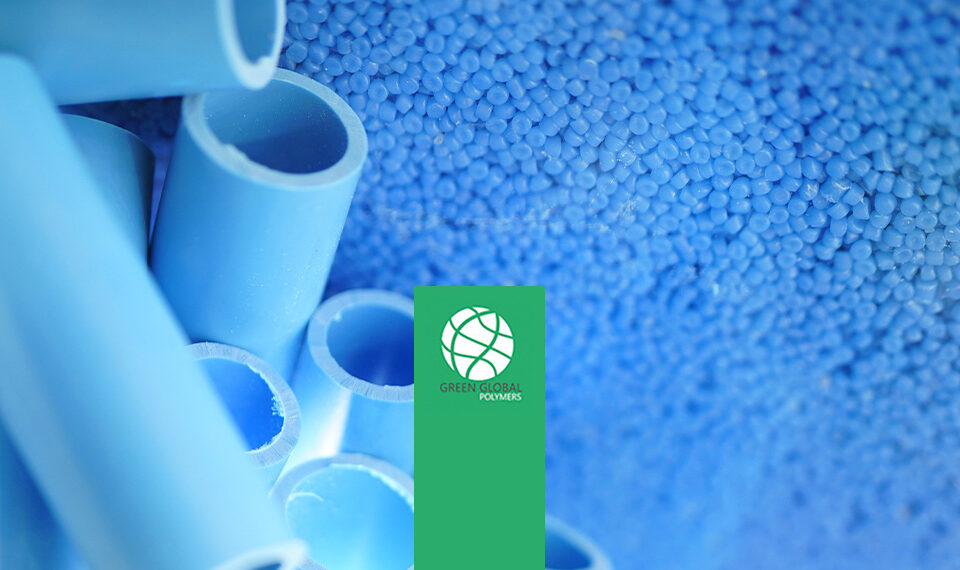¿Cómo se recicla el PVC?

¿Qué es el PVC y por qué es importante su reciclaje?
El PVC (Policloruro de Vinilo) es uno de los plásticos más utilizados en el mundo gracias a su versatilidad y resistencia. Desde la construcción hasta la industria médica, este material es esencial en muchas aplicaciones. Sin embargo, su impacto ambiental ha generado una creciente preocupación, destacando la importancia de entender cómo se recicla el PVC.
El reciclaje del PVC no solo es necesario para reducir la cantidad de residuos plásticos en vertederos, sino también para aprovechar su valor como recurso reutilizable. En Green Global Polymers, llevamos más de 30 años trabajando en la transformación del PVC desechado en materiales útiles, promoviendo así la economía circular y un futuro sostenible.
El proceso de cómo se recicla el PVC
Si te preguntas cómo se recicla el PVC, el proceso puede resumirse en varias etapas clave, cada una diseñada para garantizar la calidad del material reciclado. En Green Global Polymers, seguimos un sistema optimizado que incluye:
- Recolección y clasificación:
El primer paso consiste en recolectar residuos plásticos de diferentes fuentes, como contenedores amarillos o industrias. Los materiales se clasifican según su composición para separar el PVC de otros plásticos. - Limpieza y pretratamiento:
Una vez clasificado, el PVC pasa por un proceso de lavado para eliminar impurezas como restos de adhesivos, metales o contaminantes orgánicos. - Triturado:
En nuestra planta, el PVC se tritura en partículas más pequeñas que facilitan su posterior procesamiento. Este triturado produce un material homogéneo, ideal para aplicaciones industriales. - Transformación en granzas:
Las partículas trituradas se calientan y procesan para formar granzas, pequeñas bolitas plásticas que sirven como materia prima para nuevos productos.
Este método asegura que el material reciclado conserve sus propiedades originales, permitiendo que se utilice en una amplia variedad de industrias.
Beneficios de saber cómo se recicla el PVC
Conocer cómo se recicla el PVC no solo es relevante para quienes trabajan en el sector industrial, sino también para quienes buscan contribuir a un planeta más limpio. El reciclaje de este material ofrece múltiples ventajas:
- Reducción de residuos: Cada tonelada de PVC reciclado evita que grandes cantidades de plástico terminen contaminando el medio ambiente.
- Ahorro de recursos naturales: Al reciclar PVC, disminuimos la dependencia del petróleo y el gas natural, materiales utilizados para fabricar plásticos vírgenes.
- Disminución de emisiones de carbono: El reciclaje de PVC genera menos emisiones en comparación con la producción desde cero.
- Impulso a la economía circular: Reciclar PVC fomenta un modelo en el que los recursos se reutilizan en lugar de desecharse, promoviendo la sostenibilidad.
En Green Global Polymers, estos beneficios son nuestra razón de ser. Cada día nos esforzamos por mostrar que el reciclaje no es solo una solución ambiental, sino también una oportunidad económica.
Aplicaciones del PVC reciclado
Una de las preguntas más frecuentes después de entender cómo se recicla el PVC es: “¿Qué se hace con él?”. El PVC reciclado es extremadamente versátil y se utiliza en una amplia variedad de aplicaciones, incluyendo:
- Construcción: Fabricación de tubos, marcos de ventanas, revestimientos y cables eléctricos.
- Industria médica: Producción de bolsas intravenosas e instrumental médico.
- Empaque: Creación de envases resistentes y duraderos para alimentos y medicamentos.
- Mobiliario: Elaboración de muebles y accesorios para el hogar, aprovechando su flexibilidad y resistencia.
Al transformar residuos plásticos en productos útiles, demostramos que el PVC no es un desecho, sino un recurso con múltiples vidas.
Desafíos en el reciclaje del PVC y nuestras soluciones
Aunque el proceso de reciclaje del PVC ofrece grandes beneficios, también enfrenta desafíos técnicos y logísticos. Entre los principales obstáculos se encuentran:
- Aditivos complicados: El PVC suele contener plastificantes y estabilizantes que pueden dificultar su reciclaje.
- Separación de materiales: Muchas veces, el PVC se encuentra mezclado con otros plásticos o metales, lo que exige procesos avanzados de separación.
- Costo de procesamiento: Los equipos y tecnologías necesarias para reciclar PVC pueden ser costosos.
En Green Global Polymers, abordamos estos problemas con soluciones innovadoras:
- Utilizamos tecnologías de detección y clasificación de última generación para garantizar un reciclaje eficiente.
- Desarrollamos métodos sostenibles que minimizan el consumo de energía y reducen el impacto ambiental.
- Priorizamos la investigación y el desarrollo para encontrar formas más económicas y efectivas de reciclar PVC.
Gracias a nuestra experiencia, superamos estos desafíos y mantenemos la calidad en cada etapa del proceso.
Nuestro compromiso con la sostenibilidad
Para Green Global Polymers, el reciclaje no es solo un negocio; es una misión. Nuestro compromiso con la sostenibilidad se refleja en cada aspecto de nuestro trabajo, desde la recolección de materiales hasta la producción de granzas y plástico triturado.
Al explicar cómo se recicla el PVC, buscamos educar y motivar a empresas y consumidores a sumarse al esfuerzo por reducir la contaminación. Nuestra planta en Ribarroja del Túria es un ejemplo de cómo la tradición y la innovación pueden combinarse para abordar los desafíos ambientales más urgentes.
Cada tonelada de PVC reciclado que producimos es un paso hacia un futuro más verde, donde los recursos se reutilizan en lugar de agotarse.
Saber cómo se recicla el PVC es fundamental contra la contaminación
Saber cómo se recicla el PVC es fundamental en la lucha contra la contaminación plástica. En Green Global Polymers, transformamos este conocimiento en acción, recuperando desechos y dándoles una nueva vida como granzas y plástico triturado de alta calidad.
Con más de tres décadas de experiencia, seguimos liderando el cambio hacia una economía circular, demostrando que el reciclaje no solo es posible, sino imprescindible.
Te invitamos a unirte a este movimiento. Al reciclar y reutilizar plásticos como el PVC, no solo protegemos el medio ambiente, sino que también construimos un futuro más limpio y sostenible para todos. ¡Contacta con nosotros!



